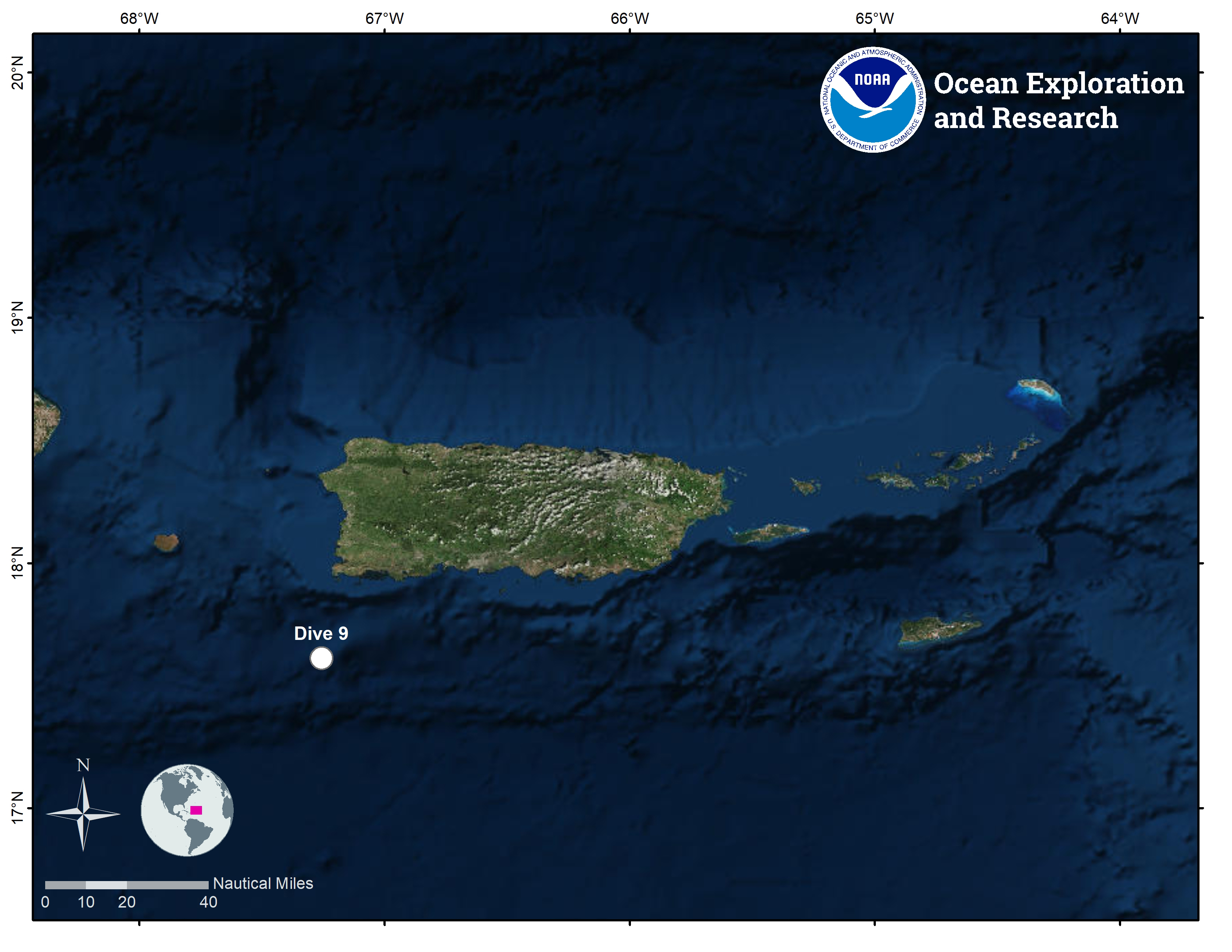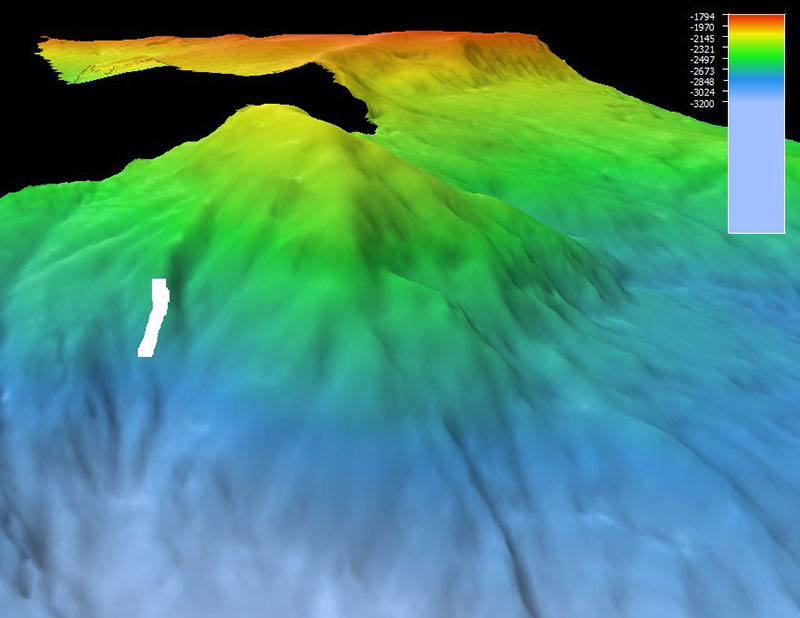-
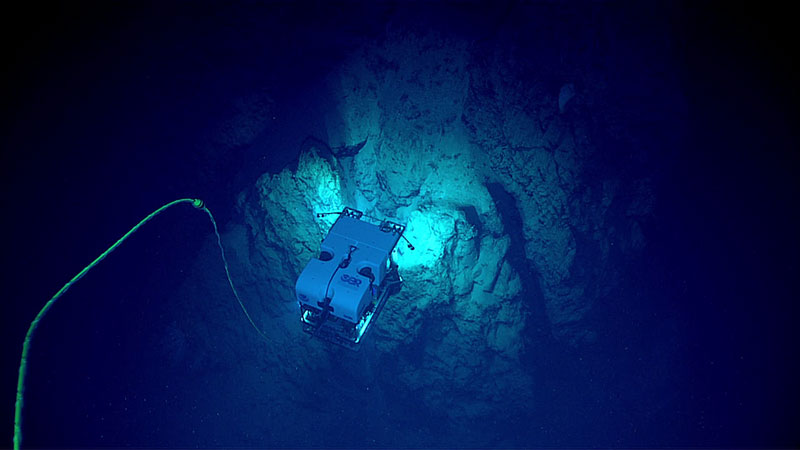
Dive 9 followed a steep ridge with jagged pinnacles at depths between 2,610-2,789 meters (8,560-9,150 feet). Image courtesy of the NOAA Office of Ocean Exploration and Research, Exploring Deep-sea Habitats off Puerto Rico and the U.S. Virgin Islands. Download larger version (jpg, 537 KB).
-
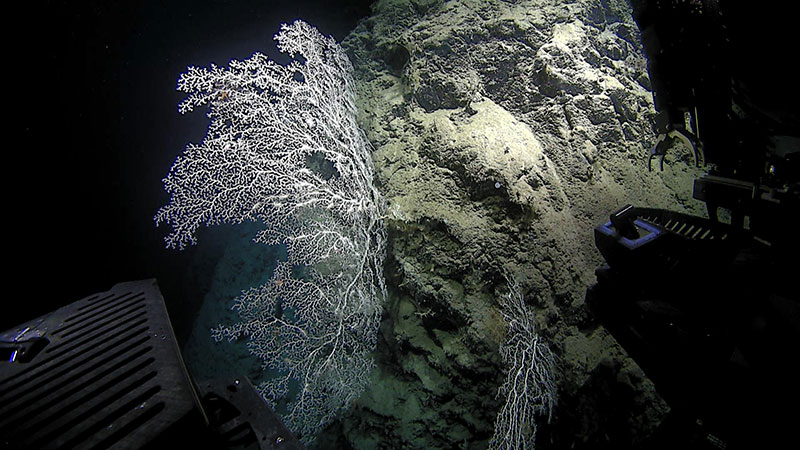
A large sea fan of the precious coral Corallium niobe was one of the most noteworthy observations during Dive 9. Image courtesy of the NOAA Office of Ocean Exploration and Research, Exploring Deep-sea Habitats off Puerto Rico and the U.S. Virgin Islands. Download larger version (jpg, 1.1 MB).
-
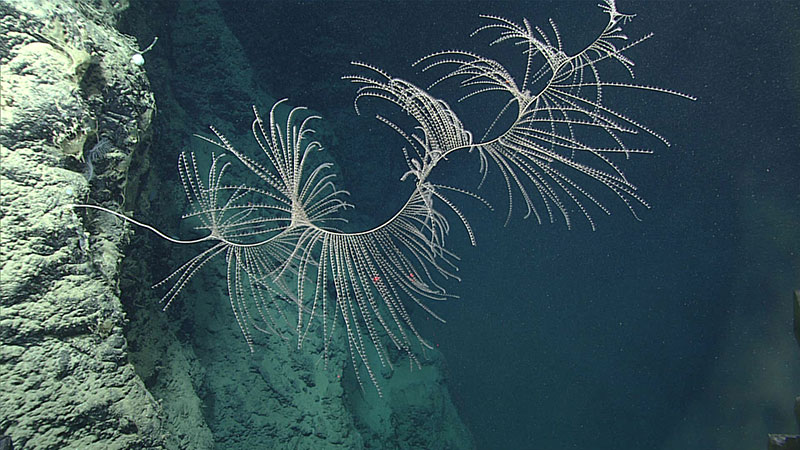
Several large colonies of the gorgonian octocoral Iridogorgia magnispiralis were seen during the dive, which we estimated were between 1-2 meters (6-9 feet) in height. Image courtesy of the NOAA Office of Ocean Exploration and Research, Exploring Deep-sea Habitats off Puerto Rico and the U.S. Virgin Islands. Download larger version (jpg, 1.3 MB).
-
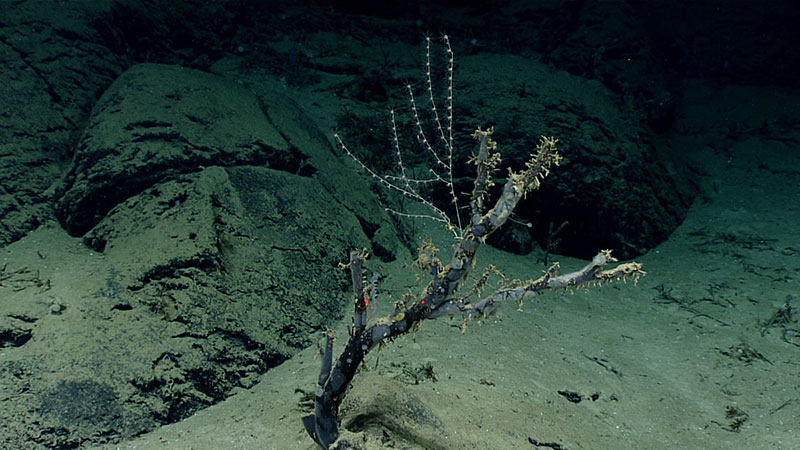
Multiple thick stumps with heavy ferromanganese coating were seen throughout the dive, which are presumably the remnants of very old coral colonies. Image courtesy of the NOAA Office of Ocean Exploration and Research, Exploring Deep-sea Habitats off Puerto Rico and the U.S. Virgin Islands. Download larger version (jpg, 1.2 MB).
